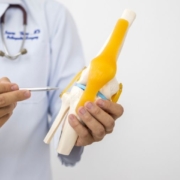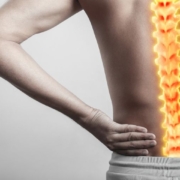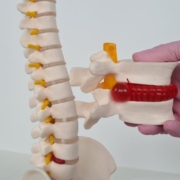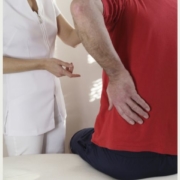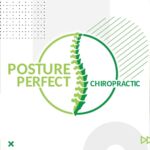Treating Meniscus Tears with Chiropractic Massage
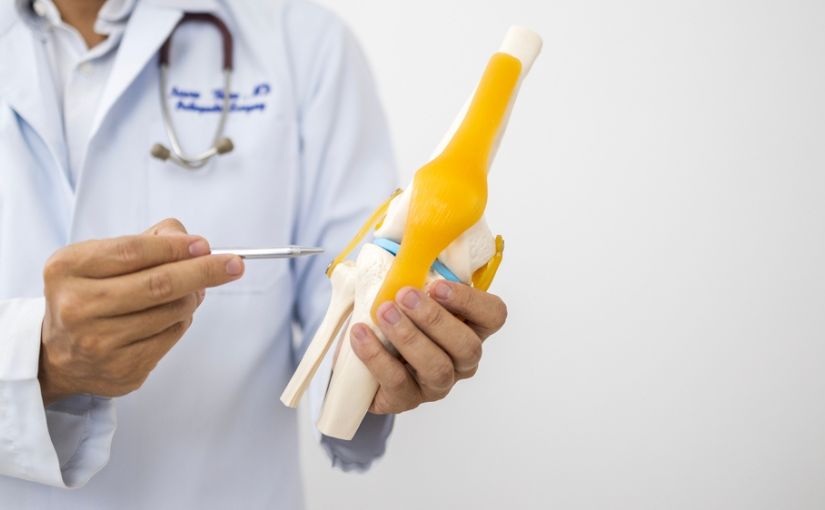
Knee injuries, particularly meniscus tears, are some of the most common injuries among athletes (amateur and professional) and weekend warriors. If left untreated, they may lead to degenerative conditions that may permanently change biomechanics, which may lead to a decline in overall well-being.
Conventional treatments often include rest, icing, physical therapy, surgery, and so forth. However, chiropractic massage and care have become widely recognized as complementary treatments to the aforementioned methods. This write-up aims to explore the nature of meniscus tears and what is the main idea of chiropractic therapy when it comes to treatment as well as rehabilitation. Read on.
Understanding Meniscus Tears
According to Johns Hopkins Medicine, the meniscus is the C-shaped cartilage structure that sits between the lower leg bone (tibia) and the thigh bone (femur). It plays an important role in physiology because it protects the lower part of the leg from the shock that may accumulate due to body weight.
Meniscus tears often happen when individuals turn or twist their upper leg while their foot is planted, and then, their knee becomes bent. Some have a discoid meniscus or a meniscus that can develop as a disk shape or block. The probability of tearing such a cartilage is quite high and commonly develops during childhood. Its symptoms include pain in the knee joint, swelling, limping, inability to bend the knee, and so on.
With regard to statistics, there are no Philippine-based numbers as of the writing of this article, but for reference, global data suggest that the prevalence of meniscus tears is about 12% to 14%, with an approximate incidence of about 61 cases in every 100,000 people. This is according to the National Library of Medicine.
Consequently, acute conditions that are caused by trauma-related tears are quite rampant in active young populations and those who regularly engage in athletic activities.
Meniscus Tears: The Chiropractic Massage Connection
The good news is that all is not lost for individuals who have encountered meniscus tears. That is because of conventional medical methods that include icing, nonsteroidal anti-inflammatory drugs, physical therapy, bracing, etc. On top of these, many health professionals encourage complementary methods in the mold of chiropractic massage.
A separate study from the National Library of Medicine, suggests that chiropractors serve a role as primary contacts as well as conservative management alternatives to secondary contact orthopedic consultation. This is because the mentioned professionals are not just well-versed in helping patients improve their posture; they can also help those who encounter meniscus injuries.
Furthermore, they can safely rely on clinical analysis in an effort to diagnose meniscus injuries. Consequently, they can provide a holistic approach in conjunction with orthopedic therapy and the like.
Remember, for a chiropractor for posture to deliver an effective, efficient, and safe form of treatment, many professionals offer a, say, multimodal approach. This means that they use a combination of passive and active care to address acute and chronic conditions.
Common chiropractic treatments for meniscus tears are as follows:
-
Manual manipulation
Manual manipulation for meniscus tears does not directly treat the said condition. It does, however, play a key role when it comes to reducing inflammation, improving joint alignment, enhancing range of motion, and strengthening surrounding muscles. All these are essential when it comes to promoting meniscus tear healing.
How is this possible? Well, before a chiropractor performs a chiropractic massage or any form of manipulation, he or she pinpoints the compensatory cause of the pain from the meniscus tear. Afterward, he or she fixes the issue that messes up the knee’s alignment, which can be tightness from another part of the body.
-
Electrotherapy
Chiropractic electrotherapy, which usually includes different modalities such as Transcutaneous Electrical Nerve Stimulation (TENS), Neuromuscular Electrical Stimulation (NMES), Interferential Current (IFC), is beneficial when it comes to managing meniscus tear symptoms, and later on, aid in healing.
If properly performed, the said method can improve range of motion, flexibility, and mobility. In the process, it can strengthen the muscles that have been weakened by meniscus tears. Which means that it can help patients heal faster and return to normal activities in no time.
-
Home exercise program
Aside from performing chiropractic massage and other methods of care, a chiro doctor may create a home exercise program for meniscus tears. It is designed to focus on reducing pain, enhancing range of motion, and strengthening the knee as well as its supporting muscles.
There are general guidelines for the said program and they are as follows:
-
-
Consultation
-
Consult a licensed chiropractor or a general physician before starting an exercise program. This is essential so as to ensure that the right workout that complements one’s level of physical fitness is performed.
Such a strategic approach can also prevent overtraining syndrome (OTS), a condition wherein too often or too intense exercise harms the body. It is common among athletes and its symptoms include fatigue, decreased motivation, muscle soreness, and a myriad of other physical as well as mental issues.
-
-
Warm-up
-
It is best to start a workout with a gentle warm-up. According to the National Health Service (NHS), the publicly funded healthcare system in England, this is essential because it boosts heart rate and enhances blood flow.
In turn, this allows more oxygen to reach the muscles. If properly done, this can improve efficiency in movement and reduce the probability of injuries. A good warm-up includes about 5 to 10 minutes of walking that is coupled by dynamic stretching.
-
-
Proper progression
-
It is best to start slow and engage in low-impact exercises and then gradually increase intensity. Bear in mind that the timetable of increasing intensity is relative and should be done if pain decreases and strength improves.
In line with this, it is best to listen to the body if an exercise causes pain. If it is persistent, it is best to stop the exercise so as to prevent injury from worsening.
-
Be patient
Recovering from meniscus tears is not a walk in the park and may take time. Therefore, it is best to have the right mindset and stick to one’s workout plan. In line with this, it should be noted that patience is a virtue when getting meniscus tears treatment.
Summing up
Meniscus tears, if left untreated, can have a negative impact on one’s mobility and overall quality of life. On the one hand, conventional treatments such as surgery as well as physical therapy are essential. On the other hand, chiropractic massage and other similar chiro treatments offer a valuable as well as holistic option for managing the said injuries.
The said holistic method focuses on reducing pain, restoring joint function, and eventually promoting healing. Licensed chiropractors can help affected individuals restore their mobility and allow them to return to their active lifestyles.
If you are suffering from a meniscus tear, seriously consider consulting a qualified chiropractor at Posture Perfect. We can help you explore how this form of treatment can benefit you.

